It’s been a touch over two years since my last Power2Max product review, for their now-named Classic edition. About a year or so ago they came out with their Type-S editions, which would make for their 3rd generation unit. I’ve had a Type-S unit since last summer, but started actively putting miles on it this past fall – providing me plenty of variation of weather conditions to test things out.
The Type-S is effectively an incremental upgrade over the previous generation, with mostly minor hardware tweaks – but much greater crank compatibility. At the same time, Power2Max has become extremely popular due to its lower price point than most other crank based power meters.
Before we get into the full review, note that Power2Max did send me over the unit to try out, but upon wrapping up the review I’ll send it back to them – just like always.
Lastly, at the end of the day keep in mind I’m just like any other regular athlete out there. I write these reviews because I’m inherently a curious person with a technology background, and thus I try and be as complete as I can. But, if I’ve missed something or if you spot something that doesn’t quite jive – just let me know and I’ll be happy to get it all sorted out. Also, because the technology world constantly changes, I try and go back and update these reviews as new features and functionality are added – or if bugs are fixed.
So – with that intro, let’s get into things.
Unboxing:
The unboxing ‘experience’ you’ll have will vary a fair bit depending on which version of the Power2Max you ordered. If you buy a full crankset, you’ll have more parts. Inversely, if you buy just the Power2Max pod you’ll have just that piece.
In my case they sent over basically the full package: Power2Max pod/spider, Praxis chainrings, and ROTOR 3D+ crank arms. There are of course a gazillion different combinations though, so things will vary slightly.
Inside the main black box though is where the main Power2Max magic is. That’s the piece that contains their components, versus components they’ve bundled from other companies.
You’ll find four basic things:
A) The Power2Max spider
B) A manual and paper stuffs
C) Some nifty color stickers
D) CR2450N battery
Starting with the stickers and manual, you can use these to dress up the pod with a variety of colors. In my case I went more low-key just using the white/grey ones (you’ll see it applied later). Then of course there’s the manual too.
Then you’ve got the Power2Max spider and battery. It’s the spider which you’ll attach both crank arms as well as chainrings to. Additionally, you’ll insert that battery into it to breath life into it.
Lastly we’ve got the crank arms that came alongside, as well as the tool to lock the ROTOR crank arms in place.
We’ve also got the Praxis chainrings, but I’ll cover them briefly during installation.
Installation:
When it comes to installation, things will vary a bit depending on what you ordered and what you already have. Additionally, your installation will vary depending on what you have to remove to make way for everything. In my case, I’m going to give some of the highlights – but technology is more my forte, not bike componentry.
The first thing you’ll do though after studying the manual is to install the battery in the compartment. This is accomplished via the small screws covered by little stoppers on the back of the unit.
Within that you’ll see the slot to plop the battery in. There’s also a micro-USB port, but that’s not used for anything consumer facing at the moment. After that you’ll toss back on the cover that you see in the bottom of the picture.
Next you’ll line up the chainrings that were included. I like to line them up first so I have a mental picture of where they all go and that everything looks correct before I bolt them on.
Then I take out my trusty hex wrench set and go to town with the included bolts. As a side note, I love this wrench set, as it comes in a set with virtually every imaginable size but since it’s one piece they aren’t easily lost like most other sets. Plus, it’s cheap. So I have them in just about every room in the house (really, you can never have too many hex wrenches).
Once you’re done, you’ve got this:
Next you’ll take the crank arm pieces and ponder them for a bit.
This would be a good time to find that small bolt tightening tool that’s required. Or at least, was required for these specific ROTOR cranks. Different cranks will require different methods to tighten.
As a result of all these crank tightening differences, I’m going to assume you can follow the instructions within your crank set. Ultimately, the goal is that the crank arm is attached to your bike, though in a manner that it won’t fall off. Additionally, as one minor tip, don’t forget to put the chain on before you put the crank arms and spindle in the bike. Else, it sorta sucks.
When all is said and done you’ve got the above, ready to start using. You’ll just need to attach your pedals. Note that there are no magnets to install with the Power2Max system, as it’s fully self-sustaining. The only thing you’ll want to do is a simple zero offset, but I’ll cover that in the next section.
General Use Overview:
As with the previous generation Power2Max, the Type-S is about as easy as it gets with power meters for day to day use. There’s virtually nothing to set, nor anything to tweak. It follows in a similar vein as the PowerTap units with a ‘just pedal’ type concept.
Once you do pedal, the unit will wake-up automatically. There’s a small green light at the top of the unit that will (very) briefly illuminate to let you know it woke up. It only shows up for a split second, so it’s easy to miss.
The unit saves battery by going to sleep after you stop pedaling and it detects no activity for a few minutes. This is pretty much the norm for power meters today. The battery is a bit different than many other units though, in that it doesn’t use a CR2032, but rather a CR2450N. In the past they’ve strongly recommended Renata batteries, but they noted that with the Type-S they’re good with any brand. That battery will get you about 400 hours of life before you need to pay a few bucks to get a new battery.
When you do start pedaling and going somewhere, the unit will transmit cadence along with power. The cadence is based on an accelerometer within the unit.
In my testing this is quite suitable for cadences across a wide range, you can see below this simple chart where I plot it against a magnet based system as I increased from 20RPM to ~160RPM. Absolutely spot-on.
Next, the unit transmits both total power, as well as estimated left-right power. Total power accurately captures power from both legs, identical to that of an SRM or Quarq power meter:
Whereas estimated left/right power does the same ‘estimation’ aspect that Quarq and the upcoming PowerTap C1 units do, where they essentially ‘credit’ you one left or right power depending on which phase in the stroke you are in. This means that it’s not super-accurate, but does kinda-sorta get it in the ballpark:
If I go to one-legged pedaling you’ll see the shift. Though, you won’t see a perfect 100%-0%, because of the way it estimates the power by looking at what is otherwise the upstroke portion of the pedal power output.
Personally, I wouldn’t use these left/right estimated values for anything other than the ‘Neato’ factor, since there’s just too much variance there with how the metrics are captured. This is more marketing than anything else.
Just for clarity, here’s how it works. It takes your down stroke on (for example) the right side and assumes that all power delivered during that phase is ‘Right only’. Once that occurs, you’re now pressing down on the left side, so it then assumes that all power exerted is coming from the left side. Where this logic falls apart is any up stroke power, which isn’t taken into account for left/right usage (it is in total power of course).
In any event, this left-right data will show up both on the head unit, as well as online afterwards depending on your training platform. Below is an example with Garmin Connect:
When it comes to calibration the unit supports the ability to zero offset it. This is sorta the simplest form of ‘calibration’. I put the term calibration in quotes because purists like to say that the only proper calibration is when you attach weights or some other static load. Whereas setting an offset isn’t a pure calibration. While that definition is great for lab settings, I’m just looking to advance the use of any form of calibration by consumers in ensuring their power meters are properly prepared for a ride. So I’m not as picky in the general sense, since the number of users globally doing such static load tests can likely be counted in the double-digits (in total).
What the Power2Max does support as noted is the zero offset procedure. To trigger this you’ll utilize your head unit and just select ‘calibrate’. This should generally be done while you are off the bike with your bike shoes unclipped, as you don’t want to apply load to the pedals.
The unit will then report a calibration value to you:
The Power2Max also has auto zero enabled permanently, which means when you don’t apply force to the pedals for more than two seconds it’ll automatically zero the unit, such as when coasting. Note that their track editions have the auto zero option permanently disabled, requiring a manual zero.
In scenarios like long climbs, the unit will leverage temperature monitoring and compensation. This means that the Power2Max unit will compensate for temperature changes – which can otherwise cause drift in power value accuracy.
In general, I tend to set the offset (calibrate on the head unit) before each ride after I’ve taken the bike outside. Then I usually do it about 15 minutes into a ride. I tend to do this across all power meters I use, and as a result I tend to get highly accurate results across many brands. The reason for the 15-minutes has nothing to do with actively pedaling, but mostly just because it allows more time for temperature compensation to catch up. With the Power2Max it’s less of an issue since it’s continually compensating, however if you were pedaling for 15 minutes non-stop after bringing your bike from indoors to outdoors, it’s something to consider since most temperature sensors take a bit of time to warm-up.
Thus, for those triathletes in the crowd, simply do this in the morning before you leave the transition area for the water, that’s usually more than enough time between when you left your car, setup, and leave your bike.
While Power2Max says they support elliptical/osymetric chainrings (i.e. Q-rings), they’ve not offered a lot of proof that they do. Of course, most other products don’t support it either. Only the ROTOR Power System and PowerTap wheel hubs do (nope, not even SRM). So it’s not a huge surprise/gap – but something to be aware of. I’m happy to change this line-item once they can offer proof that they understand the issues there (which Tom Anhalt explains in detail here).
Regarding battery life, as mentioned earlier the unit uses a Renata CR2450N battery. This battery is advertised as getting 400 hours. As usual, I recommend buying a small pile of them to keep around your house/car, so you always have one handy when the battery finally dies. In my case with 400 hours of usage I haven’t hit the end of it yet.
The unit broadcasts on ANT+, which means you’ll need an ANT+ power meter capable head unit in order receive the data. There are many options, which, is a good starting point for the next section.
Compatibility with head units:
The Power2Max Type-S (as well as all Power2Max units) transmits via the ANT+ power meter device profile. This means that it connects to virtually any ANT+ head unit that supports power meters. The most common being units from Garmin, CycleOps, O-Synce, older Timex units, and even the new SRM PC8. All of which support ANT+ power meters natively.
These ANT+ power meters will also collect cadence data, as noted above, from the Power2Max. This data will display on the head unit as well as record to the activity file for later upload. This means that you do not need to have a separate cadence sensor on your bike.
Next, as noted earlier you get left/right power for supported head units. Most head units in the last 2 years include this capability, but some older ANT+ power meter capable units (like the Timex Cycle Trainer or Global Trainer) that would support ANT+ power meters don’t necessarily support left/right power. However, the vast majority do. Here’s a quick listing of those that support ANT+ left/right power data:
| Product | Amazon | |
|---|---|---|
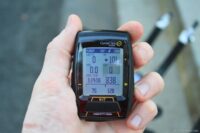 | CycleOps Joule GPS $220 | Amazon |
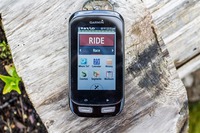 | Garmin Edge 1000 $599 | Amazon |
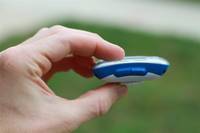 | Garmin Edge 500 $199 | Amazon |
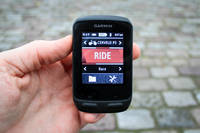 | Garmin Edge 510 $329 | Amazon |
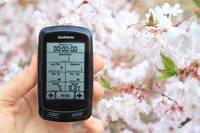 | Garmin Edge 800 $320 | Amazon |
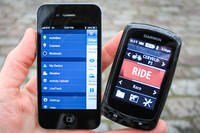 | Garmin Edge 810 $399 | Amazon |
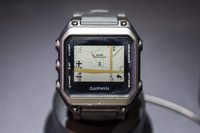 | Garmin Epix $549 | Amazon |
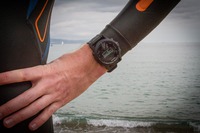 | Garmin Fenix2/Fenix2 SE $399 | Amazon |
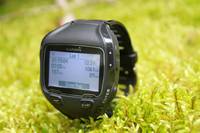 | Garmin Forerunner 910XT $399 | Amazon |
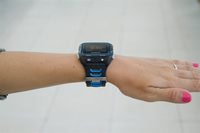 | Garmin Forerunner 920XT $249 | Amazon |
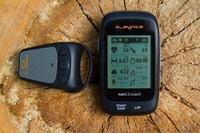 | O-Synce Navi2Coach $249 | Amazon |
When it comes to pairing, you’ll go into the pairing menu on your particular head unit and search for the Power2Max. It’ll find it and display an ANT+ ID. This ID is also located on the sticker that came with the unit, and can be seen on the manual page listed as the serial number, as well as on the box outside.
From there, you can calibrate (zero offset) as noted in the previous section. You cannot however turn off auto zero. Auto zero will automatically engage after 2 seconds of unloaded activity, such as coasting.
Finally, note that while some newer power meters are dual ANT+/Bluetooth Smart, the Power2Max is not currently one of those units. To date, the only shipping units with dual support is Stages Power, and 4iiii Precision – which just started shipping last week. All other power meters on the market are purely ANT+, with the exception of the Polar/Look solution, and Bluetooth Smart caps for the PowerTap G3.
However, I’d expect that by the end of the year it’ll be commonplace for the vast majority of shipping power meters to offer dual connectivity. This certainly appears to be the case with almost all recently announced products supporting both ANT+ and Bluetooth Smart.
Power Meter Accuracy Test Results:
Now we’ll dive into some of the power meter accuracy data. These are from a number of rides across a variety of conditions. I’ve tried to choose fairly different rides to compare against below.
Before we get into that, I’ll briefly explain how I capture and compare data. In my case I usually have between 3-4 power meters running concurrently. In outdoor cases, such as seen above, I’ve got a PowerTap G3, along with Garmin Vector pedals – as well as the Power2Max. Indoors, I typically utilize the CompuTrainer for power meter tests as it adds ‘another’ unit to the test set. Sometimes though, it’ll be another trainer I have handy – such as the Wahoo KICKR. Just depends on what’s setup that day and the purpose of the test.
For each test I record the data in two places. The first is with a flotilla of Garmin Edge units, one paired to each unit. The second is with an ANT+ data logging application connected to the North Pole Engineering WASP ANT+ to WiFI bridge. This device consolidates the power meter data and gives me a single cohesive picture of everything. Within this review I use data from both sources.
Test #1 Data: Sunset Ride
First we’ll look at a sunset ride I did this past fall. In fact, it was the very first ride with the Power2Max. And, in the case of Vector it was the first ride on this specific bike. Now normally I don’t like including first ride data, because most power meters you want to let settle a ride or two, but I decided to include it to show that things worked out quite well actually.
First the 1-second data. I won’t show the 1-second data again in other test samples, but I want to illustrate that comparing 1-second data on a graph is kinda useless. It’s just too hard to make out anything:
Ok, so let’s do a rolling 30-second trend line. Now things become much more clear. Here you can see that by and large things track very nicely. There’s a few points where they disagree very briefly (sometimes Vector, sometimes PowerTap). Those appear to be aligned to areas where power is completely removed. I’ve every once in a while seen cases where the WASP will repeat a non-zero value for those sections for certain power meters when a zero-value should be applied, so I cross-referenced those against the backup files and zero’d out/cleaned up the majority of those sections.
Overall though, this looks pretty solid, they all track quite closely, despite a variety of riding conditions including some solid stretches of cobblestones.
Test #2 Data: Late Night Ride
Next up we’ve got a midnight ride I did around the city. Same group of power meters as previous, just on a slightly difference course. This set includes some very difficult cobbles sections (difficult for power meters, not me), as well as some climbing and of course general city streets.
We’re just going to get right into the 30-second data, because quite frankly it’s beautiful. It’s about as good as you’ll ever get for power meter alignment:
And as for the cadence? Yup, almost equally pretty.
There’s just one tiny little section where they disagree, which is just after the half-way point. This here:
So I was curious here – why the differences? And how big? Well, to answer the second question they are only different by between 2-4RPM (at 20RPM). That RPM value is actually at the absolute base of all these units (19-20RPM is the minimum limit). In this case, it was basically fluctuating just under/over that, so it’d go between zero and 20RPM.
This particular section was while I was coasting downhill over some short cobbles speed-bumps, just barely pedaling (obviously, at 20RPM). So, at worst in an almost-non-pedaling situation you’re looking at a few RPM differences. But realistically nobody would ever notice the difference between 20 and 24RPM. But again, there’s no telling which of these three units was technically correct for those few seconds – not that I think anyone would actually care anyway.
Test #3 Data: Trainer Ride
Finally, a look at a trainer ride. Now, I had a bunch of trainer rides, and on most of them the Power2Max agreed with one or more power meters. But this one was an oddity from last month that I can’t quite figure out. In this case, you can see that towards the end of the session it diverges from the other two units:
So I first started looking at temperature – was there drift perhaps? Well, doesn’t look like it. Here’s a Garmin Tempe sensor temperature data that happened to be on the bike at the time and picked up by the WASP:
The temperature is in Celsius and measured every minute (hence why it looks really blocky). But, we’re barely talking a single degree. So, I don’t think that’s it.
So next, I looked at cadence. This workout was a fairly easy trainer ride, and for whatever reason I was doing some moderately high cadence stuff. Sometimes you might see oddities if cadence was out of alignment. But looking at the chart, it matches the Vector perfectly. However you do see that as I start going above 110RPM this is where it matches on the earlier graph with some separation.
So next I figured, let me look at the power data for some high cadence work I did as part of accuracy testing there. Maybe that’s off. So, here’s that data:
That looks flawless. Seriously, almost perfect. You see some very minor differences at the absolute peak and bottom from the Tacx unit – but that’s just doing estimated cadence anyway (and thus estimating power). Heck, for this ride I didn’t even calibrate the Vortex since I wasn’t planning on using this data (actually, for this I didn’t calibrate anybody ahead of time).
And this is maybe a little bit of the point I want to make: It’s really hard getting every power meter on the market to give you the exact right data. I could have picked all the other rides out there that I did on this unit and it would have been flawless, except for one indoor trainer ride out of 6 months worth of on/off usage it wasn’t for 20 minutes. I have the same type of one-off weird ride data for Vector, and for the KICKR, and the same for Quarq, SRM (yes, really), Brim Brothers, and even a nugget or two on the PowerTap. No matter the manufacture, sometimes it’s just for a few minutes (as was the case here), and sometimes it’s simply an entire ride that’s wonky.
Which, is a bit of the state of the industry. Unfortunately for most riders, they’d never even know. And, even if you had two power meters you might not know. Anyone who’s looked at power numbers long enough will eventually have one of those days where the numbers just don’t line up. Ultimately though, I don’t fret about random one-off days once every 6 months of riding, what I fret about is when every ride is like that, or when it happens so often that you can’t trust it. In this case, neither of those fretfull scenarios is occurring with the Power2Max.
Power Meter Recommendations:
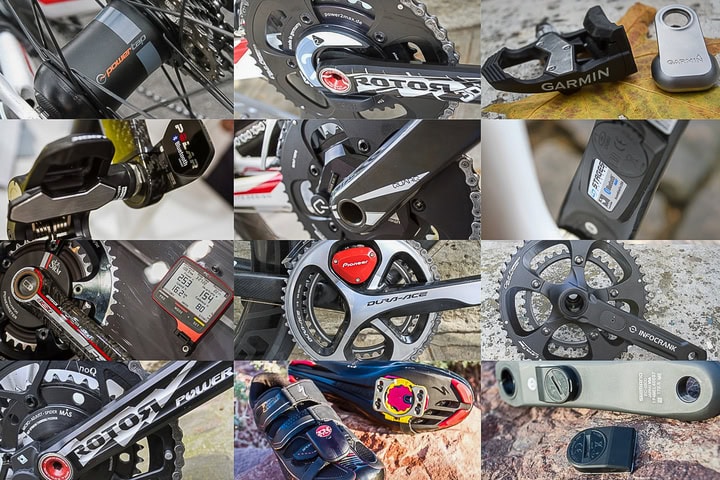
Choosing a power meter is a tough decision matrix. Anyone who answers the question “Which power meter should I choose?” and instantly names a specific brand name/model upfront, is full of crap. The correct answer is “Tell me more about your usage plans?”
There are so many variables that go into that decision beyond just price. For example: How many bikes? What type of bike? What type of pedals? Do you want to move it around a lot? Race wheels or not? What do you want to measure? And on and on.
The good news is that I cover these in-depth in my Power Meter Buyer’s Guide from this fall. While there have been a few new entrants – nothing has actually come to market yet. Meaning 4iiii’s just started shipping this past Friday, and PowerTap’s two new offerings (C1 & P1) aren’t due for a few months. Same goes for Watteam’s PowerBeat, and Brim Brothers also likely in contention for shipping soon status too. But at the end of the day, none are shipping today (or in the case of 4iiii, shipping in large quantities).
So, to that end everything actually remains static since what was available last fall. Now I might do a revamped version in late May or pending the results of my 4iiii Precision testing that begins tomorrow. But for those wanting to take advantage of power meter choices actually shipping and known today, refer to last fall’s guide.
Summary:
When looking at the Power2max, there’s little question it’s a reliable unit that does the job well. As of today, the pricing is among the best out there for units actually shipping in quantity. Though I expect in the coming months as more of the recently announced new competitive offerings begin to start shipping that Power2Max will likely have to lower prices to compete (just as other power meter companies will as well).
Over the last year Power2Max has done an impressive job of increasing the array of cranks and chainrings that they support, making it one of the most widely compatible power meters in that component region of the bike. Of course, at the same time, it is a component that’s less easily swapped between bikes than a rear wheel (for most people). So if bike portability is concerned, you may want to look at all the options on the market. On the flipside, the price point of the Power2Max makes it so that you could realistically almost buy two of them for the price of something like Garmin Vector. To each their own though.
As may be obvious, I’d have no problems using the Power2Max as the primary power meter on my bike, it’s just as reliable as any of the other leading power meters in the market today.
As always, thanks for reading – and feel free to drop any questions below!
(Preemptive ‘When will I review X power meter’ section: This review kicks off what will likely be bi-weekly direct force power meter reviews for the foreseeable future. Much of the data has actually been gathered over the last 4-6 months, just a case of analyzing data and writing up reviews. Next you’ll see the Verve Infocrank review, followed by the Pioneer unit. Then, some variant of a 4iiii Precision review (left only initially with follow-up dual-sided piece when it releases), then we’ve got PowerTap’s P1 pedals followed by the C1 unit. Somewhere in there I’ll re-visit the Polar pedals once the Polar V650 supports them. But as usual, anything else that pops out will be slotted based on a combination of when it got into the queue and reader interest/demand.)

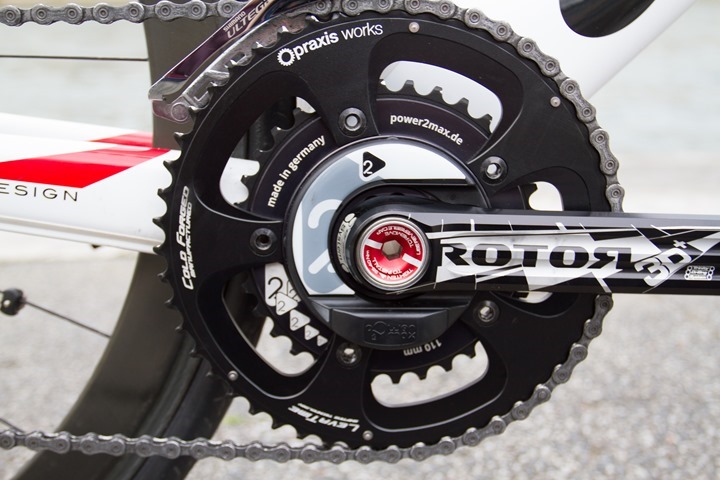
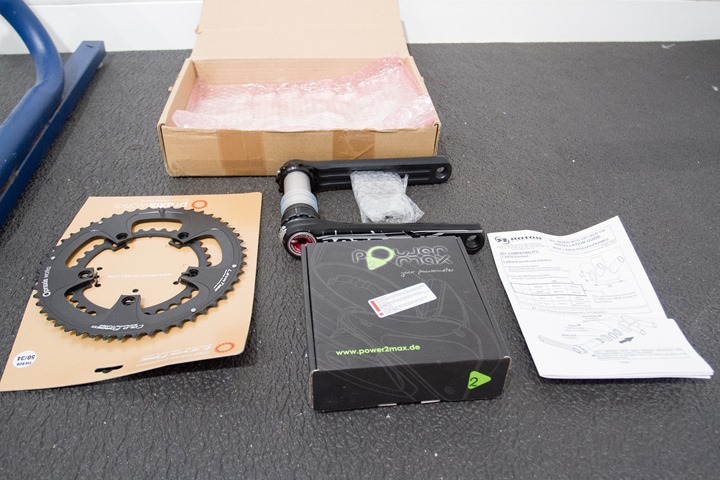
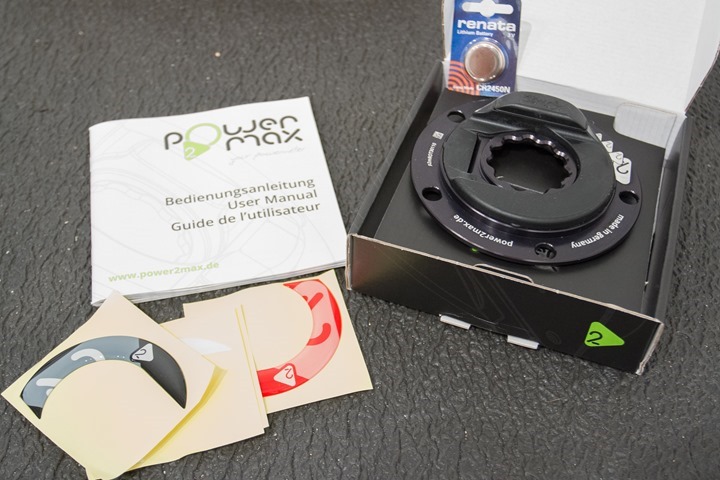
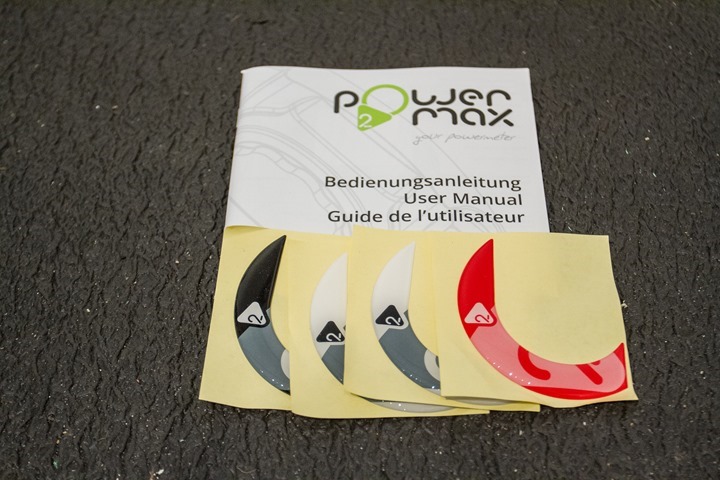
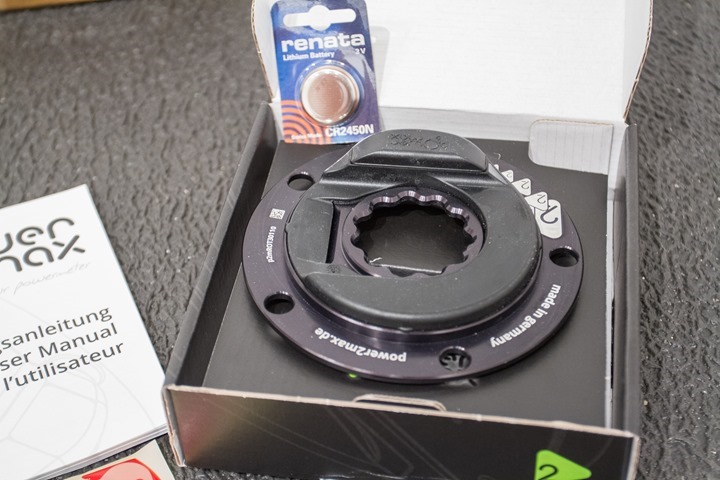
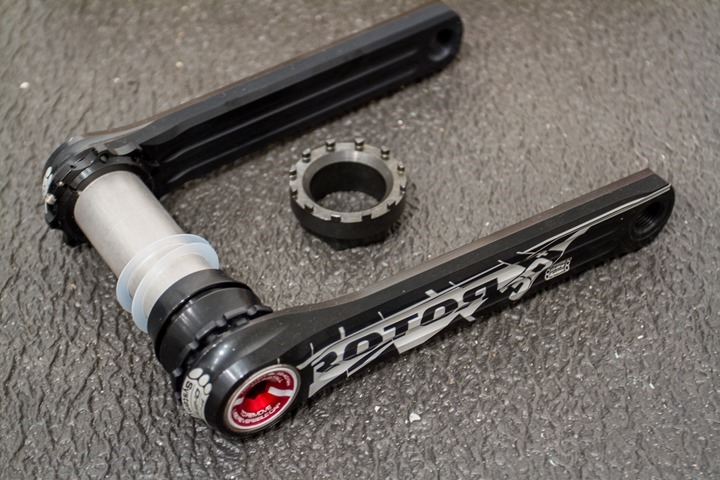
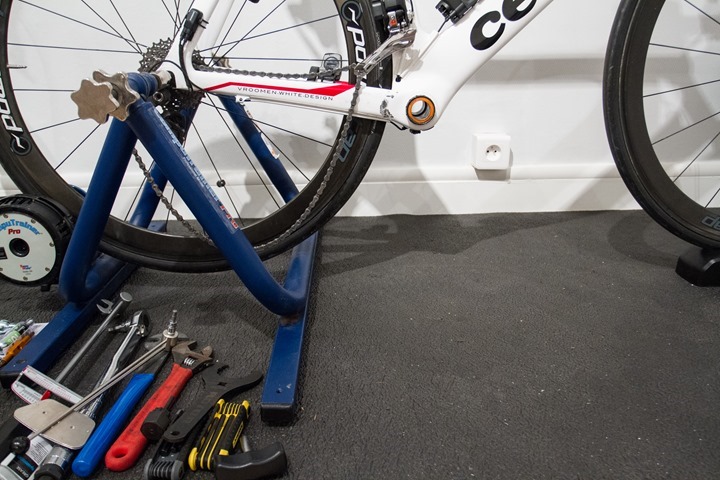
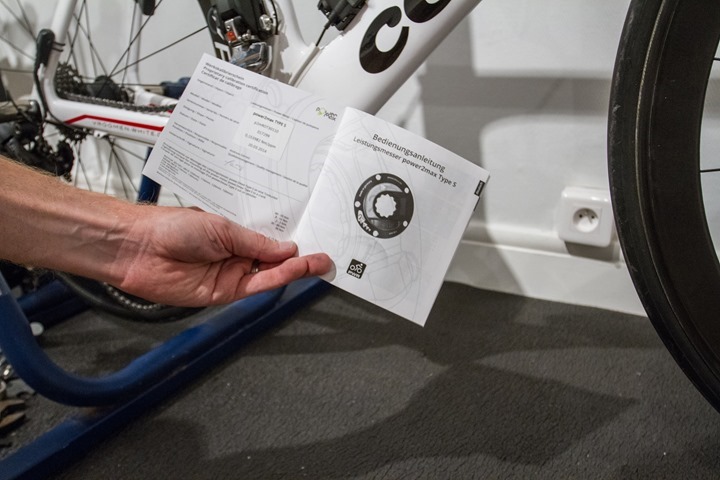
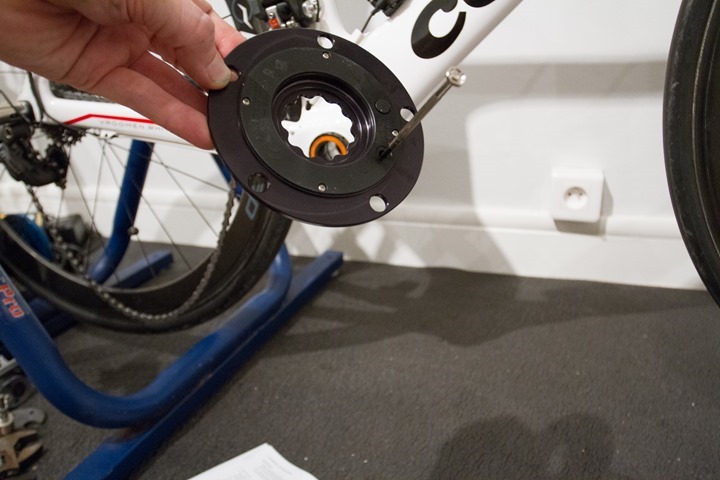
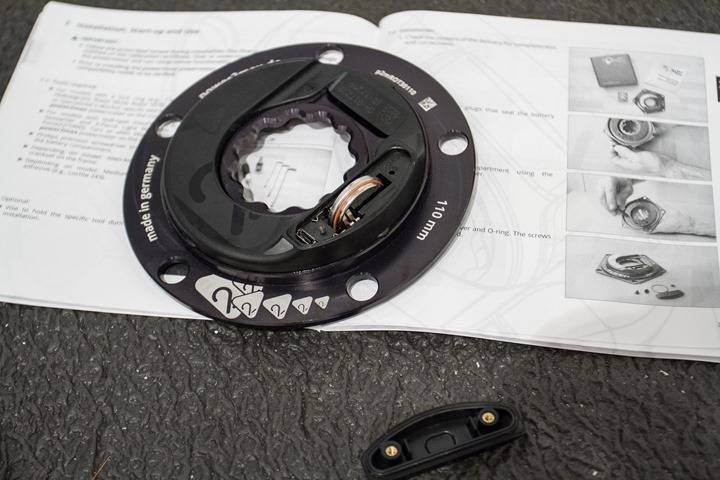
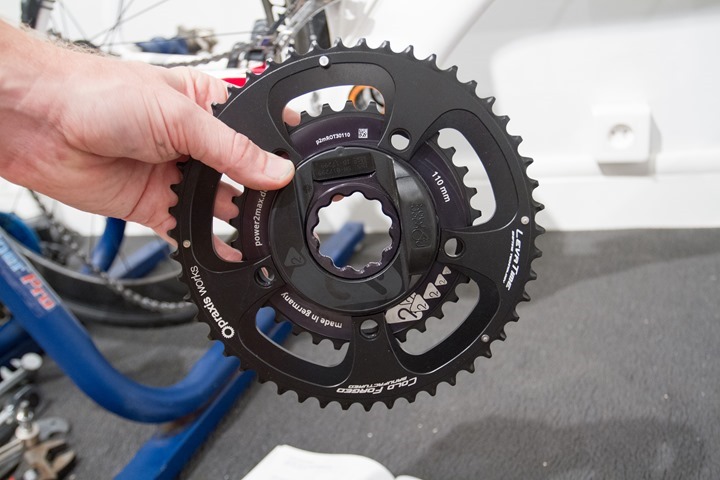
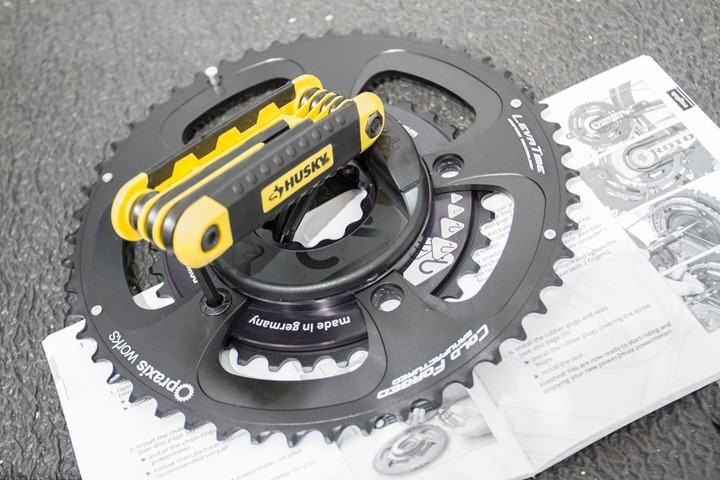
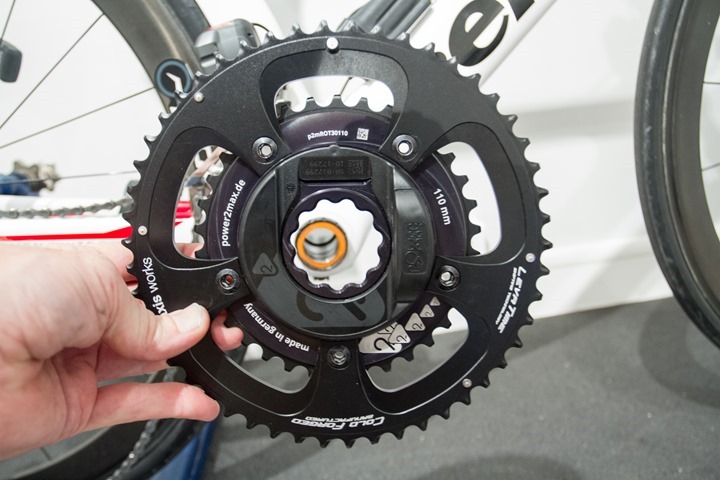
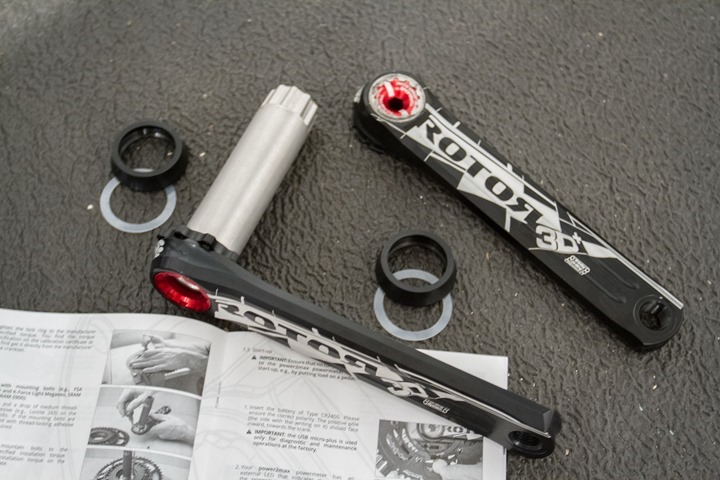
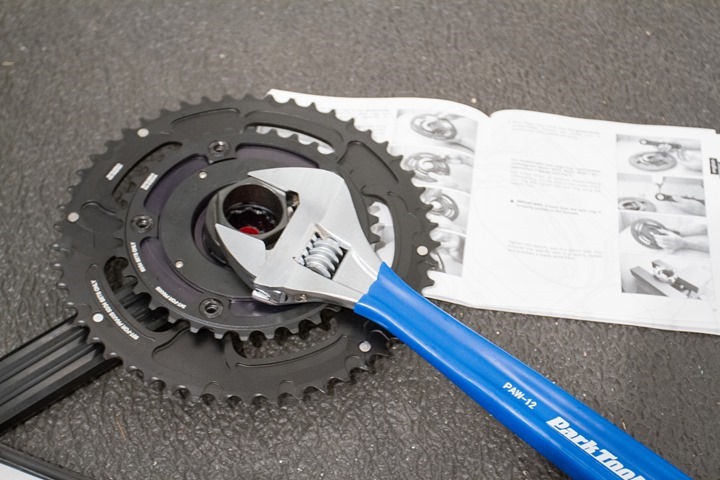
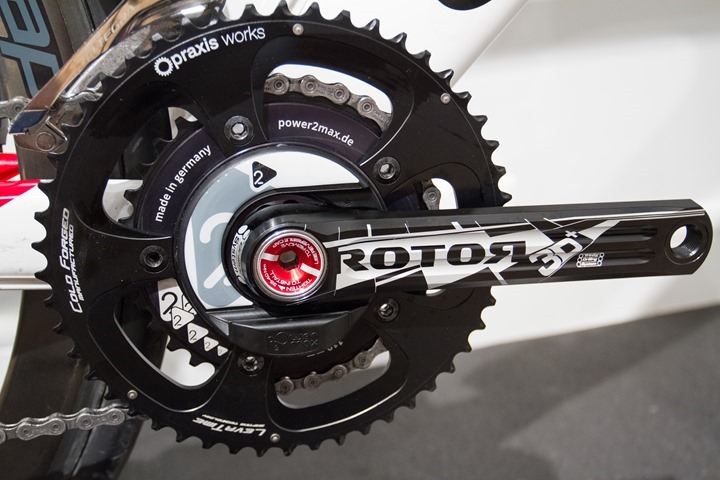
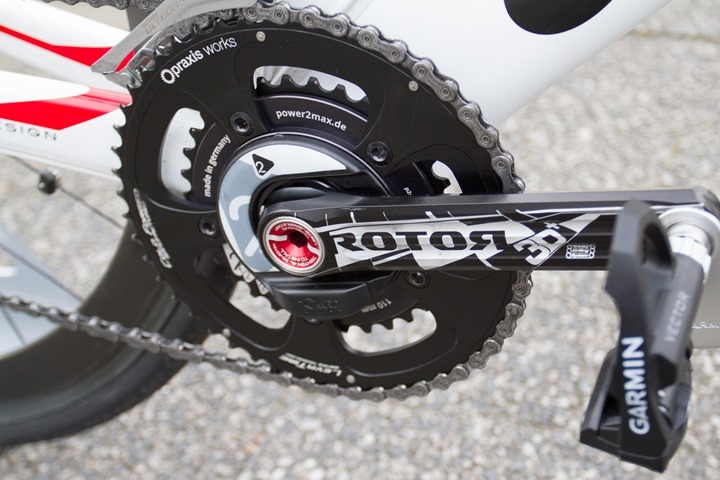
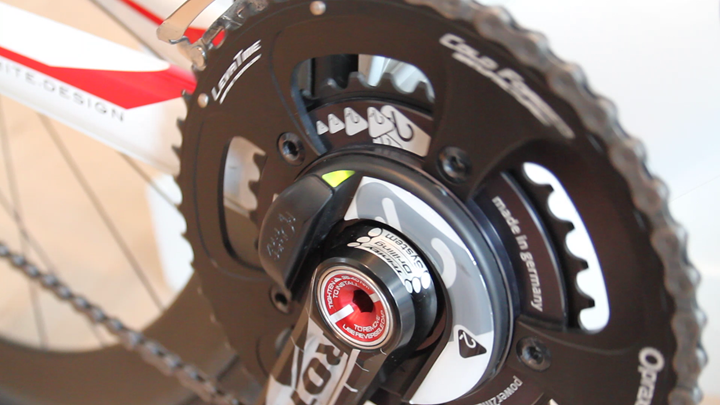
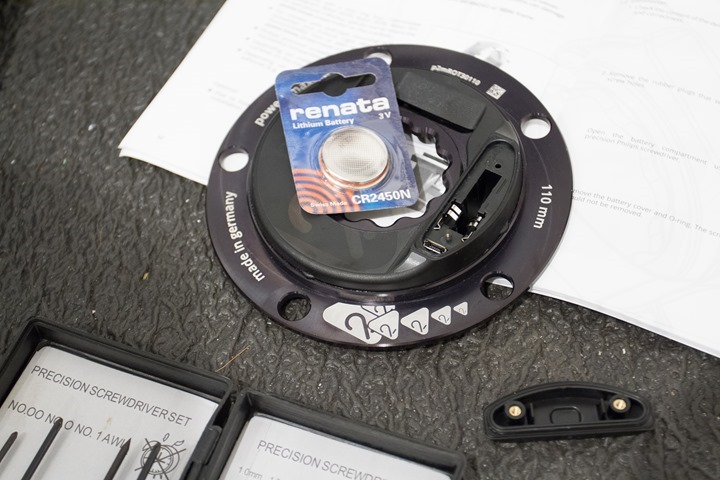

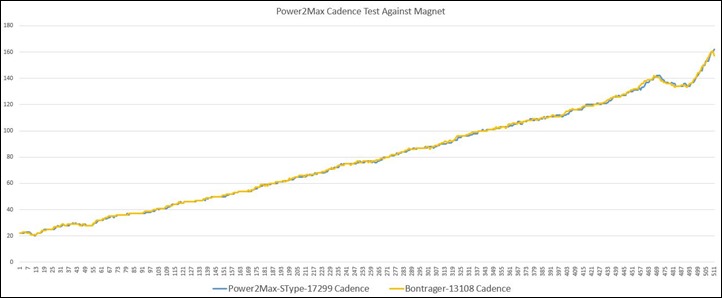
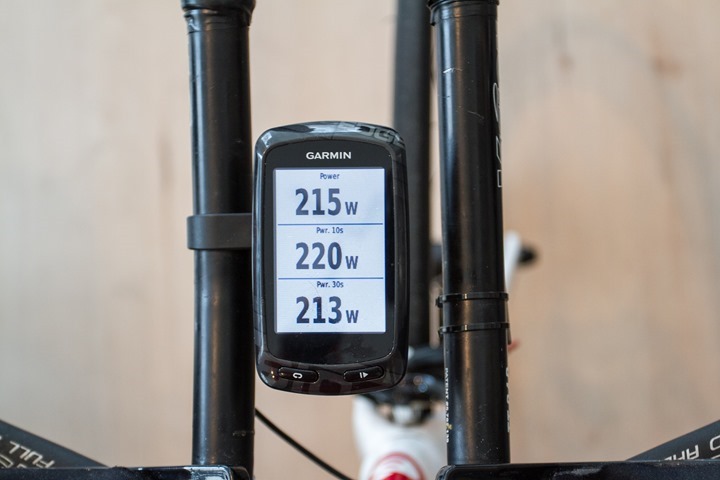
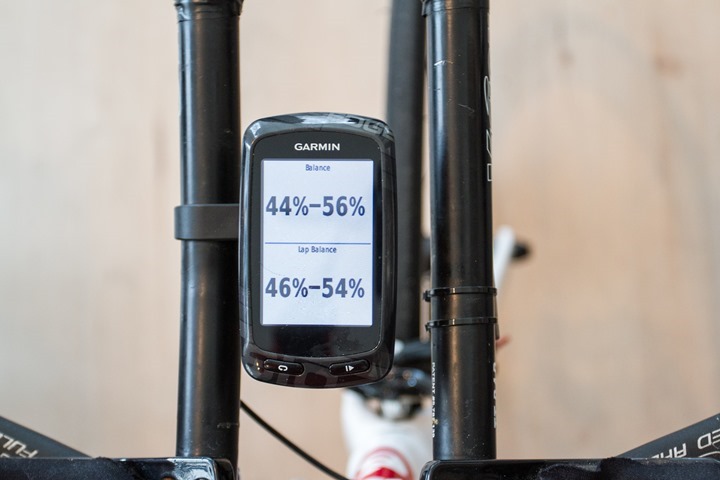
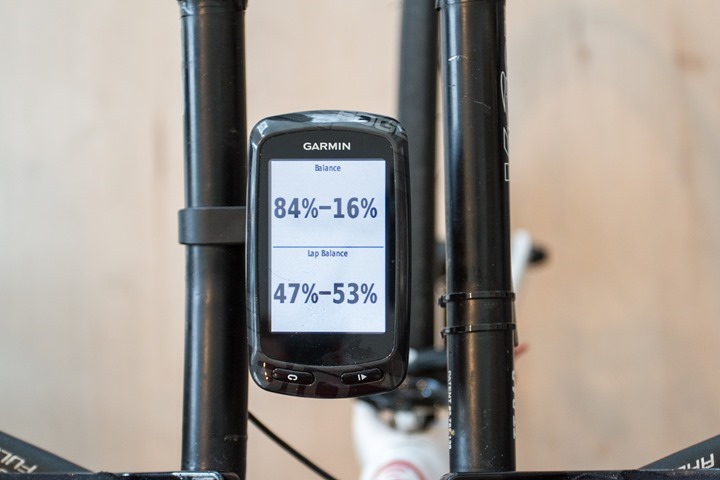


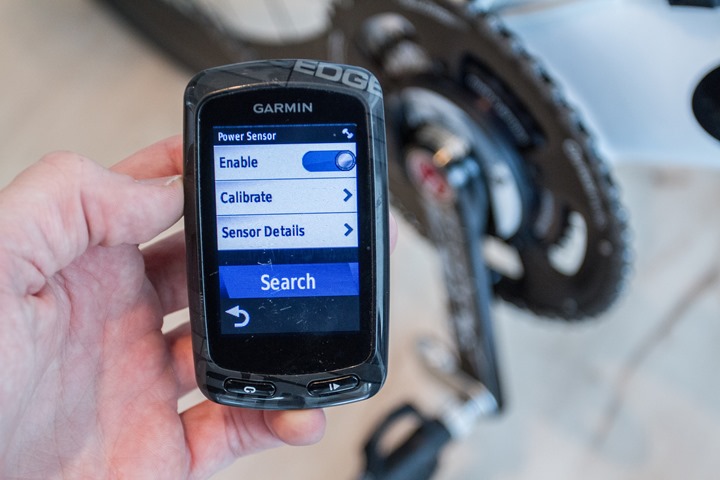
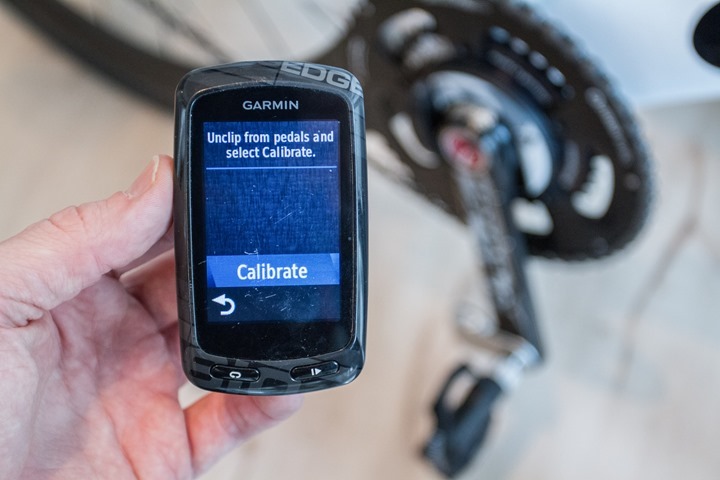


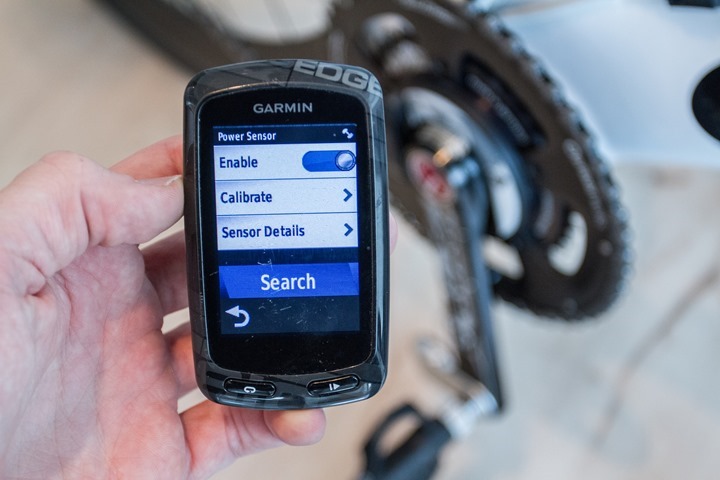
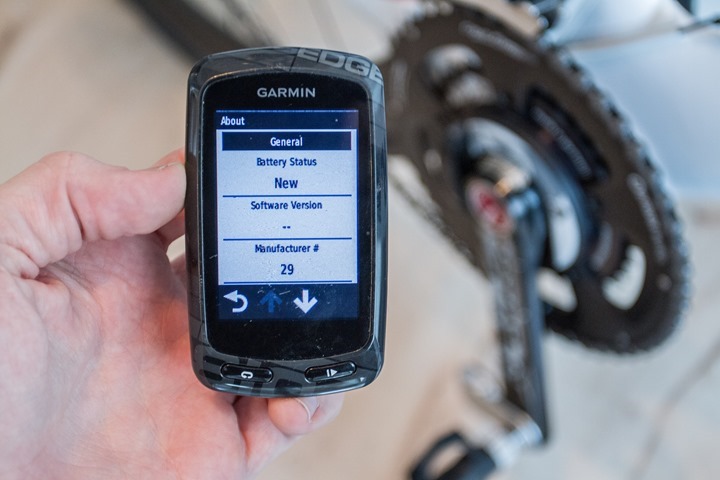
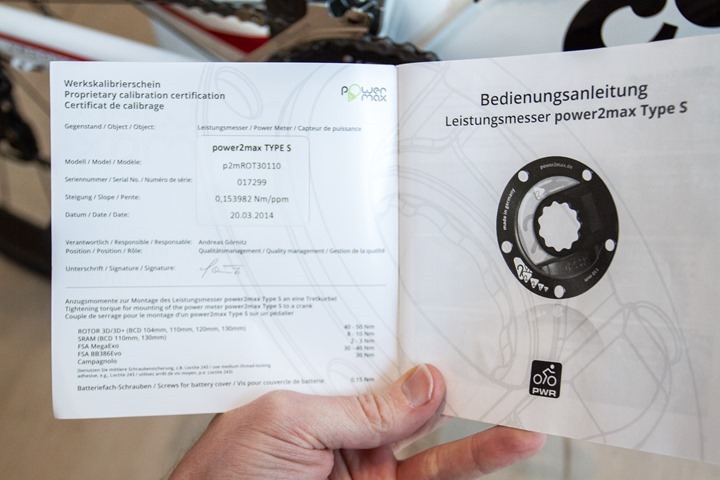
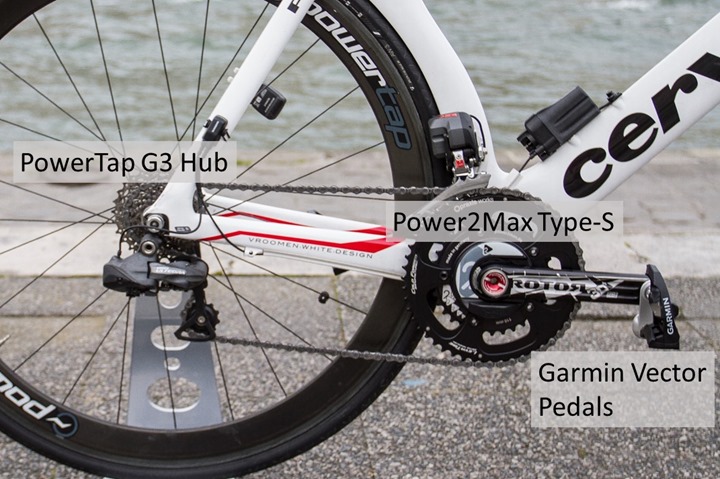









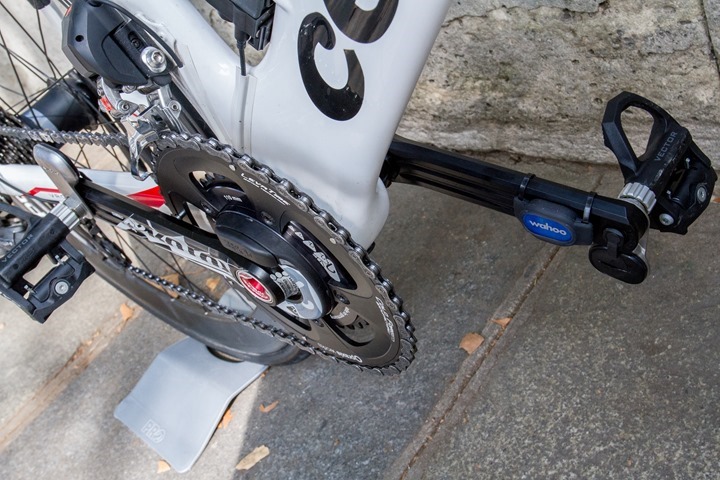

















Hi Ray,
Do you by chance able to ride the p2max type S in a torrential rain? You haven’t touch on its reliability yet. Accuracy and repeatable data is one thing but some of us would really wants to see how it held up against bad weather!
I did have a few good rains, though nothing I’d classify as torrential. We don’t get those too often in Paris unfortunately.
That said, I didn’t see any issues post-rain, either with ingress or any long term issues. I haven’t seen any reports out there on the interwebs with rain either. With the battery pod design on the Type-S, it’d actually be rather difficult to get water in there.
A few friends have had issue with water ingress in the battery compartments – killed the units. Albeit the “classic” versions. Also this is in Ireland so lots of rain.
Yeah, the battery compartment on the Classic was on the front and much more easily accessible. With the Type-S, the water has to tunnel past the rubber stoppers, through the two screws only accessible from the back, and then past the o-ring (or, I suppose directly through the front pod o-rings, but it’s tighter than the classic). A wee bit trickier!
Water got inside the battery compartment of my Type S. It didn’t cause any issue that I noticed, but when I changed the battery (which did seem to die a bit early) there was water and the battery was oxidized. The battery cover does seem a bit flimsy and I really don’t see how the o-ring is supposed to help… Really poor design IMO, especially considering how inconvenient it is.
Been riding and racing with both power2max classic and most recently the Type S here in Vancouver, BC in some extremely soggy conditions in our local Spring Series without a single issue. I’m sure you’d get many others who would report the same but I thought I’d throw my voice into the chorus :)
Mine survived a season racing in Belgium – with all the rain and grit that it throws up. I don’t see an issue with the design nor how it is ‘poor’. Flimsy? Nope. And the o-ring is self explanatory. Could it be improved? Well you can answer “yes” to that for any product.
Just sounds like you were unlucky. And given Power2Max’s great after-sales, surprised you sound so bitter over it. Did they not look after you?
I’m not bitter Nick, and I didn’t contact them for this since as I said, it didn’t cause any issue and is certainly not worth the hassle of shipping the unit back to them. That being said there are many issues with the design of the battery compartment, some of which include: having to take the crank off to change the battery (BB shell obstructs access to the screws), having to use a screwdriver to change the battery, screws of the battery cover not being easily accessible, screw holes being a potential way for water to get in. As for the o-ring, as you may have noticed it’s not compressed by the cover and is therefore pretty much useless. Certainly nothing to lose sleep over, but poor design nonetheless. As an engineer I find it annoying to see the design come short on something so trivial on a product that is otherwise very nicely engineered.
When you’re complaining on a location where your opinion could potentially harm Power2Max sales – yet have not at all given the company a chance assess or resolve the your complaint – then it might not be bitter. It is however quite poor form.
As for needing to remove the crank – there’s not a crank option P2M sell that adds more than 5 minutes to the batter changing process. A battery whose screws are easily accessible with cranks on or off for me (and plenty of others). And screw holes whose position are actually such they’re done to avoid water – with rubber plugs to make double sure (or did they not come on yours?).
As for lambasting them for “having to use a screwdriver to change the battery”. Sure Quarq’s process is tool free, but then I’d argue P2M have asked you to use a very basic workshop tool to ensure a more secure battery port. Which leads me to conclude that you have to be trolling, as you’re going to a lot of effort to smear a product you own when it’s “nothing to lose sleep over”.
Listen Nick, I was answering to a question from another user about the waterproofness of the battery compartment. While I was at it as shared my opinion on said battery compartment. Not trolling, just giving my honest opinion on a specific feature of a device that otherwise like and use and would recommend to my friends. No need to get on your high horse.
The Power2Max is such a good price so I bought two. One for my race bike and one for my rain bike. It rains a lot where live, so a dedicated rain bike with fenders is a requirement if you want to ride.
I have thousands of miles on my rain bike equipped with a power2max and have had not one issue.
I owned 2 power meters from another manufacturer and both (race bike and rain bike) fried in the rain.
Power2Max has no issues in the rain! None what so ever. I have ridden in several torrential down pours with monsoon winds.
PS. I have the Type S.
As the Power2Max Type S is also available for MTB and I’m looking at either this or Quarq XX1. What would you aim for regarding durability and lasting in off-road environment?
I unfortunately haven’t tested any mountain bike options (mostly as I lack a lot of close-in mountain bike trails in Paris, as well as a mountain bike). I’m sorry!
I don’t know about others, but I for one would enjoy some MTB or CX power information if you got the chance at some point in the future.
I’d as well! I just lack such a bike. :(
@AK: Hi, Nicolas from power2max here. In terms of waterproofing you’re on the safe side. The electronics are separate from the battery compartment and encased in plastic. So even if you did get water in the battery compartment, all you’d need to do is let it dry out and you’re good to go.
Movistar rode in pretty torrential conditions last year (e.g., at the Giro) and never had problems.
Cheers
Nicolas
Hi Nicholas,
I am taking advantage of having someone from P2M in the discussion.
Could you please clarify the point on the “support” of osymetric and other non-round rings ?
As Ray points out in the review, you state that you support them, but without addtional precision.
Do you mean only in a physical compatibility way (as in you can mount them), or do you mean in a more complete way (with, in your calculations, the consideration of the changes in the angular velocity along one non-round ring rotation) .
There is more details on the adjtusments needed to properly measure the power for non-round rings in the link provided by Ray at the end of the “General Use Overview” section.
Can you comment on this ?
Cheers
Hi Faraway,
our power meters don’t use a magnet to establish cadence, so the cadence interval is not discrete per crank revolution. The accelerometer data is sampled like the power data, at 50HZ.
We have tested our power meters with round and oval rings and haven’t detected significant differences.
Cheers
Nicolas
What difference do you classify as “significant”?
Hi
Do you know if it reports low state battery? I have one on my tri bike and cadence stopped reporting a few days ago but power numbers keep coming through. I’m wondering if it’s running low on battery and so just reporting power numbers (but I haven’t got a low battery notification on the garmin head unit yet).
(As an aside, I added a magnet to the crank and got the cadence numbers back – I have a speed/cadence sensor on the bike for rear wheel speed for tunnels and turbo trainer work so it’s just picking up from that. But, remove the crank arm magnet and I lose cadence again but still keep power).
Cheers
In my case it’s reporting battery state to the Garmin, though I don’t know offhand if it properly sends a low-battery warning. Perhaps P2M could confirm.
As for the magnet item, that’s actually more of a Garmin order of operations issue. A magnet based paired sensor will override a non-magnet based source. So in this case because you have the speed/cadence sensor and it’s turned on (due to speed), it’ll override the power meter cadence with the zero-value. Ultimately I’d look at either getting a speed-only sensor, or just leaving the magnet there for the heck of it.
Low batter warning does get reported to the Garmin (at least with the P2M classic and an Edge 500). However, it comes pretty late in the game, as I only got an hour or two of riding after the warning came on before the PM stopped sending power.
As far as waterproofing, mine survived the tail end of a cross season just fine and you can’t get much more abusive conditions than cold, wet, muddy cross races.
Interesting – understand the “order of priority” point but in my case the cadence readings dropped out entirely and only came back when I added the magnet to the crank. So, the P2M wasn’t reporting cadence at all and I just wondered if it was it’s way of saying “help, I’m running low on battery”. I’ll try a new battery this weekend (it only stopped reporting cadence last weekend so I’ve only had about 6hrs on the bike since) and removing the magnet and see if I get cadence (from the P2M) back. If not then I guess it’s time to ask P2M what’s going on with my power meter (which has performed well to date – or at least I think it has in that the readings I get seem consistent with those for my powertap which I use on another bike).
Correct, but the magnet to the crank was because it was coming from the speed/cadence sensor – correct?
Maybe I’m misunderstanding. My point being that if you have a separate speed/cadence sensor, but don’t actually install the magnet, that zero-value being transmitted (due to magnet) will actually override the Power2Max’s cadence value (somewhat by design, by Garmin).
Mine gave the warning half way through a 6 hour ride. I got home and even through my reco ride the next day with battery life still remaining (albeit with another ‘low battery’ warning the following day).
Just my .02
I have the P2M Classic, and a Garmin speed/cadence sensor but no cadence magnet. I get both speed (from the garmin) and cadence (from the P2M) just fine, even on the trainer with my Edge in computer mode (ie, GPS off, so speed is coming from the sensor).
Which Edge?
(I know some don’t process it correctly, only because I learned this the hard way once before…)
Hi Ray
Yep – in this case the cadence only came (and came from) the cadence sensor / magnet combination and not the P2M accelerometer. So the relevant install was P2M plus speed/cadence sensor plus magnet on crank arm and magnet on wheel. (With all that kit on the bike you’d hope I’d get something!)
However, I’d previously (as in the day before the “problem” arose) got P2M cadence readings with the set up being P2M plus speed/cadence sensor plus magnet on the wheel. So, the fact that the sensor was a speed / cadence sensor didn’t seem to cause issues with the P2M transmitting (and the Garmin displaying the P2M transmission) of cadence readings as long as there was no crank arm magnet.
When I lost cadence readings from the no crank arm magnet set up (because the P2M no longer seemed to be sending it or becuase teh Garmin all of a sudden decided to stop displaying it – not sure which) I simply added a crank arm magnet and the speed / cadence sensor was then actually able to pick up and transmit cadence.
So, long way of saying the only thing that changed was that the P2M/Garmin combination went (overnight) from displaying cadence on the Garmin to not doing so. To “fix” this I added a crank arm magnet to get the cadence reading from elsewhere (the speed / cadence sensor) but wondered if the drop out in cadence reporting I experienced was the P2M saying it needed a new battery.
Am I reading you right though? It sounds like you MIGHT be saying that if I have a speed / cadence sensor on the bike then even if it can’t report cadence (because I haven’t given it a cadence magnet to play with) it will report 0 value to Garmin and they will over-ride any non-zero values coming from the P2M? This doesn’t gel with what I had experienced for the approx 8 months I ran the bike with s/c sensor (but no cadence magnet) plus P2M but am curious if that’s what you are saying “should” happen?
By the way – using an Edge 800 and a 910XT and same experience with both, i.e. speed cadence sensor with no cadence magnet hasn’t historically caused problems with P2M reporting the cadence.
Edge 500. The unit is probably 5 years old, and has whatever firmware was out last year when I last updated it…I’m pretty much a set it and forget it person, I only updated because I was having issues with the unit locking up while following GPX tracks (appeared to resolve that).
I plan to move away from the GSC10 speed/cadence sensor and get a set of the individual ones you reviewed some time ago so I can switch sensors back and forth between bikes.
Did you note any shift quality issues with the change from Shimano crank & rings to the Rotor/Praxis combo or was it fit & forget?
I have the Praxis rings on my P2M (type S) and they replace Shimano Ultegra rings. Have been very happy with the Praxis shifting.
I’ve had a type S campagnolo version for around 7 month and it has been faultless . Recently I tested the type S and a powertap G3 simultaneously and found the type S to be 2% higher which I imagine is down to drive train losses.
Hey Ray are you aware of an app called poweredge? I came across it yesterday and it supposedly using a variety of metrics to give phone users power without a power meter. Obviously skeptical and I found no reviews online. Curious if this is something you know about or would even consider doing a review for. Thanks!
I was one of the early adopters of the Type S. Here’s some feedback:
– Unit works like a charm. I like the idea of the just pedal with no calibration thing
– I had issues with the BB when installing this on a BB90 frame. I’ve had 2 shops look at it. It just never felt the same way as regular crank. It felt “stiffer” in the sense that I had to pedal harder for a full revolution
– the Praxis rings were stiff but didn’t jive well with my Di2. The small to big ring shifting was precise but not as fluid as when I used a Shimano crank
– P2M customer service was excellent. I wish they would’ve awarded me for being honest though (they accidentally shipped me an extra unit) ;)
Overall my experience with P2M was good though I would advise everyone to check the compatibility chart. I eventually sold my unit to someone who rides a P5 and haven’t heard from him since so I guess it’s fine.
Ray,
Have you experienced the Power2Max reading a slight bit lower than other power meters (i.e. Quarq or Computrainer)? Both myself and a friend moved to Power2Max Type S units from Quarq. Subjectively I felt like the Power2Max read about 5% lower than the Quarq. My friend felt the same thing and he compared it to his Computrainer which reinforced our hypothesis. Just wondering if anyone else has experienced the same thing. Of course, I understand that it really doesn’t matter and that precision is more important than accuracy.
Hello Michael,
I am a fellow Power2Max user as well (Campagnolo Type-S) and have had my unit for nearly 7 months like another user above. In my case I am coming from a Powertap PRO+ and my power values have consistently been ~5-7% lower for steady state efforts and 150-200 watts lower for peak sprint values. Admittedly, it took a while to adjust since the ego was suffering from initial confusion but all was well when I finally managed to test both units at the same time on one bike.
Prior to riding with both units, I was “killing” myself on efforts trying to replicate my Powertap readings. Now all is well with my “fudge” factor. I just needed collect more data from the new power meter.
I went from SRM to P2M and found between 1.5-2.5% (lower) difference in power, depending on the time being measured across. I now use a rough 2% ‘rule of thumb’ when comparing back to any SRM power.
I’m getting a 7% lower average wattage reading from my new P2M compared to my Wahoo Kickr. Saw a few other posts mentionings 1-5%. Should i be concerned?
Only if you can be certain as to which device is ‘correct’. On your KICKR, I’d also double-check if there’s any firmware update that you haven’t yet completed (most notably the recent one).
One more followup question. With your experience with power meters that measure Left/Right balance, does the Power2Max Type S tend to exaggerate it any? I’ve never had one that measured Left/Right balance before and I am consistently at 44/56. My buddy used to be 50/50 on his Quarq but now seems to be in the 48/52 range on his Power2Max Type S. Just curious.
My Left/Right balance from my P2M is in line with some wattbike testing i have done. So I’m happy with that metric my P2M gives me
It’s really going to vary a ton. I was going to put some neat comparisons showing L/R from P2M vs Vector, still might add them in when I have a moment to clean up the data.
Just curious if you did have a chance to work on that data and have the “true” vs. “estimated” (Vector vs. P2M) L/R data ready?
A question about 15-minute calibration: Do you need to stop your workout, or can you do it mid-ride?
I stop. If on a trainer, I stop briefly (only takes 20-30 seconds for 3-4 years, less for one). If on the road, I try to time it to a stoplight/stopsign.
For me I just make sure to take my bike outside at least 15 minutes before my ride to let everything adjust to any difference in temperature. At that point there’s really no need to do it 15 minutes after beginning your ride. Plus, you can just coast for 2 seconds and that will also do the same thing. I’ve had the Type S for over a year and it truly has been set-it-and-forget-it. In fact, I just purchased a 2nd one for my road bike since I was so happy with my first.
so power can fluctuate in temperature…so if it rains it will cool the crank off, I wonder how the power will read once it dries off in the sun?
also does power change a lot in altitude? thanks!
Power2max Type S owner here and very happy with it!
Nicolas has been awesome with the support over a number of different sites.
There is a wild amount of support and compatibility information at link to forum.slowtwitch.com.
Beware of Praxis Works chainrings! I’ve tried 52/36 with KMC 11 SL chain and there was no way to downshift from 52 to 36. Smooth and precise upshifting, but once you’ve 52 in you’ve got to keep it…
I had a pair of 52/36 Praxis Works rings. Over time they became unreliable on the upshift. Both with a mechanical drivetrain and an Ultegra 10sp Di2. I understand front derailleur adjustments but had two separate local bike shops work on it. Praxis Works eventually swapped out the rings. I chose to go with a different config – 50/36. I’m not convinced that the 16t difference is a good combination. I now prefer 50/36 on my TT bike and 53/39 on my road bike. Both have a standard 14t difference.
As an owner of S900 cranks and praxis chain rings I think I just need the unit itself but I’m not totally sure.
It’s not overly clear if you need any of the bolts and things they offer as extras.
Bought a Type 2 spider for my new Rival crank last summer. Very happy, no issues and consistent readings.
Ray, thank you for the comments on left vs right power. I am consistently 45-55% L-R on every ride, and worried it indicated a muscle imbalance. But, doing focused on legged drills to build strength on left leg, I saw little to no difference, so gave up.
Now, I am glad I did….I was chasing an anomaly, versus a true strength/power imbalance. At least , to a degree. Thank you again, Ray.
Ray, I am probably overlooking something obvious, but what does the Type S cost?
Nevermind, I see now that the cost varies a lot based on what crank options you have. I understand why you didn’t run through the costs of all of the different varieties.
I’ve got a Type S as well and love the simplicity of it (install, sync, ride). However, one issue I have with it (and have only had to deal with it once) is changing the battery. I use the Type S on my TT bike (Argon 18 E116) that has a large bottom bracket area and as a result, I cannot access the battery compartment screws without taking the entire crankset off. Kind of a bummer and prevents an “on the road” fix for me. HOPING that Power2Max comes out with some kind of retrofit that resolves this and allows access to the battery screws on the front of the meter.
Ray: I read the part about only “double digit” number of people actually use a static weight test to check and calibrate their PM’s. I think there are more than you think, but in any case, the methods you are using to compare the particular unit the P2M gives you are not accessible to the vast majority of riders. So……I challenge that your test of one sample defines whether the P2M is accurate over the range and number of devices out there. I am one of those people that is capable of the relatively easy static weight check, and the specific deficency that P2M has is that this test cannot be done with sufficient accuracy, nor can the slope calibration be reset as many other PM’s can. To me this is a significant issue. Just because your P2M looked ok based on your tests, doesn’t mean that others do too. That’s why I still believe Quarq and SRM are superior crank based systems.
What’s the difference between this (the Type S) and the Classic? Is it just the smaller battery case with better waterproofing? That’s certainly valuable for cross, but for tri, I’d rather save the $300 difference.
Straight off the p2m site:
Our recommendation:
Go for power2max classic if…
You aren’t worried about saving the last gram but want to save $350
Don’t plan to use compact aero chain rings
Don’t have a Cannondale, SRAM, or Specialized crankset
Go for Type S if…
Weight is a priority for you
You want to have the most elegant and compact solution
You want to use compact aero chain rings
You ride a BB386EVO frame
You have an existing Cannondale, SRAM or Specialized that is compatible
I have a Cannondale (Slice). Why is there a brand incompatibility with the type S versus the classic for certain makes?
Ray, you’re missing the Pioneer SGX-CA500 head unit under left/right capable computers.
Thanks. It’s partly because I haven’t released a review of it, so it doesn’t end up in the database. Will ensure it gets in there.
Great review Ray. When tightening the drive side crankarm and the spider, using that small lockring, it there a specific torque? Could it cause power numbers to shift if done no according to torque settings?
Can you actually swap the battery without disassembling everything again?
Easily. Bike in stand, cranks do not need to be removed. Just some needle nosed pliers to get the two rubber caps off the inside of the spider off. Done in 5 minutes.
And I’m not any kind of bike mechanic.
Nick and Valentino – I have both the Classic and Type S. The honest answer to this question is that it depends on the bike frame. I use my Type S on a TT bike and because the BB area is large and the frame an aggressive aero shape, i can’t change the battery without removing the crank as i need to access the screw holes (can’t get to them because of the frame/BB being in the way) to remove the cover. The Classic can be done without removing the crank. Removing the crank isn’t difficult but it can be a pain if the battery runs out mid ride. There are a few others who have made similar comments above.
I’d not hesitate to recommend their products though. Does what it says on the tin: hence i have 2.
I Would like to translate it into Korean and (If possible) use the pictures on your review(to update it on my blog). Would you let me do this? I will reveal the source of funding on my blog when update the Korean version.
I’m sorry, I don’t permit 3rd party copies/translations of the post elsewhere. Cheers.
Been using my Power2Max Type S for about 6 months without issue. Since Left/Right is just a guess, I displayed it on my Garmin Edge for the first few rides, but the novelty wore off pretty quickly when I was almost always at 48-50/50-52 left right balance. No need to see a number when both legs are wobbly after a long hard effort. No issues installing on a SiSL2 either. Was one of the easiest accessories I could possible have put on my bike. Using a Garmin Edge 810 as the receiving unit. I have only had one time where the Garmin forgot that the P2M was attached, but I think that was a total Garmin issue (one among many). I am also using the Praxis rings but in a 50/36T combo, never could get used to the 34T inner. Using it in combination with Ultegra Di2 10-speed and the SM-EWW01 wireless unit as well as a magnetless Garmin Speed only sensor.
does your magnetless speed sensor take a long time to wake up?
how did you get the 50/36 combo? I didn’t see that option on their website.
Probably not a concern for many, but the cadence values reported by the P2M is significantly delayed compared to the old GSC10. It is an issue for me, as I use the logged cadence values to sync GPS data with video. (well, audio, as pedalling can be heard)
The P2M doesn’t report cadence when pedaling backwards, so it’s easy to tell which data source the head unit is using.
I just received my P2M S and used it for the first time. I used it on a powerbeam pro trainer and was using a trainerroad workout. I used my garmin to connect my P2M and for trainerroad I used their power numbers. Usually when I ride a trainerroad workout my power stays in a small range and did so today according to trainerroad but when I downloaded the garmin file with P2M power it was all over the place. I was watching my garmin throughout the ride and was surprised at the power movement when on trainerroad it was so consistent. IS this a power meter problem or is trainerroad the problem.
Without any power averaging employed, your power readings will vary a lot. It’s usually more useful to look at power with something like 10 or 30 second averaging or summat. You can see the difference in Phil’s plots above. He shows one power plot with 1 second averaging, and the power varies a lot. Compare the plot with his plots of power using 30 second averaging.
Yup, agree. Basically completely normal.
Where do I see Phil’s 10 or 30 second averaging and how do I look at it in Garmin connect or strava. Garmin shows max avg. The graphs don’t look anything like yours. Not sure why
You’ll see it on the head unit.
When looking at my graphs, most of the ones in the accuracy section are within Excel, so I smooth the data there to make it easier to compare.
There isn’t an option on GC otherwise. There is one on TrainingPeaks, but I don’t believe one on Strava.
The reason the trainer looks more smooth is that it sets the power level (hard set), versus your body.
I now is there, but I didn’t see any price in the review.
It depends on which edition. They start at $749US.
Hi Ray,
just swapped from vector pedals to new p2max type s.
Ride today and felt like the watt i see on garmin is a bit lower than what i was used to see with vector pedals.
(power avg )
From your data analysis between this 2 power meters do you belive that there is
a standard % difference in readings?
Technically Vector is upstream of P2M, so P2M would read slightly lower. Not much, maybe a percent or so at most.
Many thankx for the super fast reply Ray!
I managed to get a 4 bolt shimano unit before they stopped production, it has been perfect… now if they would only start up production again I would be happy – I need another!
Any word on why it’s not sold anymore?
I have a Power2Max on my rain bike with thousands of miles on it, all in the rain. Not one issue.
I’ve had the P2M S with Q-rings for over a year now and do many winter/indoor rides on the KICKR. The two track each other really well and, as long as they are both calibrated occasionally, I have not had an issues with power readings between them – usually within +/- 5w.
Battery Replacement UPDATE!!! FYI, I had ZERO issues replacing the battery on my 2014 Cervelo R3 with Rotor Q-rings. Set the bike on a workbench upside down, clean the rubber plug areas, then just position the crank so each plug is easily accessible on the lowest portion of the bottom bracket. Take then off (as shown in the P2M video), and use a very think phillips head screwdriver, and follow the P2M vid instructions. Make sure you place your hand on the other side of the battery compartment when it opens up. I put in a replacement Renata with a 2021 expiration. Total time was ten minutes (because I forgot the battery twice while walking up and down the stairs!)
Dear Ray,
I’ve been reading your site with great interest for about a year now and have recommended your reviews to many people interested in training with power. It’s been the most useful guide I’ve ever seen – your enthusiasm, depth of content and range is to be greatly commended! Enough of the applause, I have an interesting problem which you maybe able to help with…
Background:
I own a range of bikes varying between cyclocross, road and TT (etc), which I’m able to use a single power meter to transfer across them all (a Stages) as they all have the same Shimano-originating groupsets. In the last few months, my wife really got into cycling and she inherited a spare(!) PowerTap I had lying around. However, we also have a 26″ wheeled tandem with Truvativ tandem cranks which does not have a power meter. I tried fitting a Stages in place of the captain’s right hand side crank arm, but this did not work. I need help – I feel blind riding without power, and don’t know of any solution available, to date, which will solve this tandem dilemma!
Other solutions I have considered:
(1) A rear 26″ PowerTap – unfortunately, this would read both the captain’s and stoker’s combined power.
(2) 2x 4iiii, one attached to each of the left hand side cranks – alas, as I live in the UK, this would mean sending the cranks off to the US, which would mean long, long lead times and no tandem usage for a long time. I consider this to be a logistically unavailable solution.
Help!
Many thanks,
Ian.
3 P2M user here, 1 Classic (Rotor 3D+), 2 TypeS (Cannondale SISL2 & Rotor 3D+)
The Cannondale has seen the most mileage, including racing in all types of conditions, in flats and mountains. Only once after one race crash it started displaying weird numbers which went back to normal after a couple of minutes.
No other problems with either of them. The only interesting issue is, that I tend to get much lower battery life (~200-300 hours) than out of my classic Quarq CinQ (which easily surpasses 400 hours).
Readings subjectively seem to be consistent among them (though I’ve not done any formal testing). In any case, no sudden 5 or 10W increases in FTP observed :)
Great review, as always. As you mention both the Pioneer and the Infocrank coming up, with the Power2Max those are all of the options I’m currently looking at. In Europe at the moment, though, the Pioneer isn’t a cheap option at the €1400 I found, without cranks. Whereas the Infocrank is just a bit more expensive (€1390) than the Power2Max that I’d need (€1260). Not sure I’ve found the best offers or options, though. Your conclusion on the P2Max is clear, you’ve indicated the Pioneer is a solid option and a system you like (if not the head unit), but the suspense over the Infocrank is killing. Technically as sound, accurate and reliable as claimed?
I understand the US based view of the market, but there are a lot of readers from the same continent you live on, and both availability and pricing make it a different market over here. It would be great to have a brief analysis alongside the other. Not a gripe, lots of respect for the work you do. I just think it would add a lot to the site without requiring the insane amount of work involved in a single powermeter review. Enjoy the well deserved holiday!
Just got P2Max. I trained on Wahoo Kickr all winter. Used both this week together and noticed P2Max is consistently reporting about 5-10% lower wattage than the Kickr. Looks like some others have noticed the same. Is it “just the way it is”, or should i be concerned? I emailed P2M and Wahoo to ask the same.
Did you got any replay from them?
Just a heads up that Power2Max just posted a price drop on their power meters. Classic starts at $599 and Type S starts at $899.
Thanks for the review. I want to buy a power meter and i think it Will be between the quarq sworks and power2max campagnolo. Wich do you prefer and why?
I have only one bike at the moment. Sworks Tarmac with campagnolo chorus and zipp wheels. I love my speedplay zero pedals. I prefer just to at a power meter. I can with power2max but if you say the quarq is a better system.
I have a garmin edge 1000 to read the data on.
Looking forward to your advice.
Gr Marc
hi,
can I buy just the type-S POWER METER without cranks for campagnolo?
For sure you can buy only the unit! Look at power2max website
Easy, Power2Max. Rotor is left leg only, P2M captures both side.
Now that the type s is $999 AUD its very tempting!
However I’m not sure what to do, whetehr get the pwoer2max, or get a powertap and build a wheel set.
I have some carbon 50mm clincher rims I can use, and someone is selling a brand new powertap G3 for $550. Build the wheels with DT swiss spokes, and ive got a nice, light, aero wheelset. I dont really race (yet), and would just use these wheels everyday.
Or I can get the power2max.
I currently own one bike – although I want to get a track bike later.
Here I think the garmin vector win in ability to swap between bikes, but I’m a bit caught up on the single sided power thing – does it really matter for social riders who ride for fun, to increase fitness, and for Strava segments?
Power2max type S or rotor inpower???? I already have a rotor 3d plus crankset on my bike.
I’m wondering in added weight and accuracy?
Any advice???
Blessings
Is there a link for purchase. Supposedly they dropped the price to $610. Where I live in Israel the local thief (distributor) is charging way more than that. About double the price as a matter of fact. There ain’t no way I’m going to even give the thief the time of day with those kind of prices. But I am genuinely interested in this power meter. Which is why if you have a link like in other product reviews would be really good! Thanks for the terrific review!
Hi Ray,
first of all, thank’s for the great reviews!!!
I’m looking forward to buy my first powermeter and I think I’ll go for a P2M. Currently I’m running a Shimano Ultegra 6700 on a BB86 and my favourite choice would be the P2M TypeS Rotor 3D+. For this crank I’ll have to change my bearings to the PF4130 from Rotor. Do you (or anyone else reading this) have any experience with this bearings? I’ve read that some people seem to have lifespan issues due to the smaller balls in the bearings.
Just ordered, thanks for the great review as always, we are all appreciative!
Hello gents, i have as well a p2m and i’m, same as some other users are reporting,experiencing low readings compared to other units i use. At least i am not the only one reporting this issue
I’m not sure if others have commented on this, but I’m riding a P2M type S now with rotor Q rings. I’ve been comparing it between: Computrainer power reading, powertap pro+, and heart rate trends. I train winter months on the computrainer so I like to use that as my base metric for power and FTP.
Riding with Q-rings, the powertap read pretty close to the computrainer reading (it read higher than CT by about 2-3%). The P2M reads much higher. At 200 watts on the CT, P2M reads 210-215. It reads consistently, though. I suppose that means that I burn more calories when I’m riding the P2M ;) just need to FTP test measuring both power meters so I can better adjust my outdoor riding/racing plan..
Thanks Ray for you previous recommendation. I now rides P2M Type S and are very happy with what I get.
Additional question: If there any app/website you recommend for me to make sense of all the data I’m getting? e.g., L/R balance, FTP, deadzone, etc.?
I’d take a look at Sport Tracks, Training Peaks, and to some degree – Garmin Connect (if you have a Garmin device).
Hello,
I am really tied up between buying a quarq elsa rs vs p2max type S. I like the quarq as its carbon crank arm an gives specific balance as opposed to an estimate from p2max.
However, i have read that the p2max is a more reliable power meter in comparison to the older quarq power meters but i have not found any bad stories about the elsa rs.
What is your opinion on this and if you were to choose one, which would it be?
(may i also add that im using shimano hollowtech rings so i will not need to purchase rings for a quarq)
Thanks in advance
I’d rate the P2M and Quarq as equally reliable and equally accurate. Both units have had older models (3+ years) that each have their own quirks, but nothing current gen is seeing issues.
I’d would really just base your decision on compatibility and price.
GOOD AFTERNOON IS WANTED TO ASK ME POWER METER RECOMMENDED FOR TRIATHLON.
How the heck do you buy one of these?
I’m pretty adept at ordering from web sites, but i can’t for the life of me find the buy it button.
Turns out I’m not crazy. I heard from Michael at Power2Max and they are having a website hiccup with the “BUY Button” and hope to have the problem solved soon.
Ray,
For left/Right power analysis, who comes out on top between Power2Max, Quark and Powertap C1?
Thanks!
I would also love to see a comparison review of these 3. So far I have narrowed it down to the P2M and Powertap C1.
P2M is 3rd gen tech but requires me to get a new crank
PC1 is 1st gen tech but can use my existing setup (buy a new crank later)
Dear Ray,
Do you know if P2M type S powermeter works with SRM PowerControl 7 ?
Could you please explain how P2M slope figure (0.173877 Nm/ppm) converts to SRM’s slope in Hz/Nm
I have just acquired P2M and have problems with it as no cadence and power numbers are being displayed on my PowerControl 7 unit.
Thank you!
Great reviews! Keep up the excellent job!
Dear all – I have an Sworks tarmac from last year. With an Ultegra groupset. I dont understand anything to bike components. And therefore have no idea what to order at P2M. I would order and bring to my local shop for installing. But am lost and dont want to do a mistake…
Julien,
P2M is not producing powermeters adaptable for Shimano Ultegra. Therefore, if you want to buy P2M powermeter you need to by the whole set (cranks+powermeter+bottom bracket). See some guidlines here: link to power2max.de I would suggest either Cannondale Hollowgram or Specialized S-Works as both are in PF30 bottom bracket standard.
Witold – thanks so much for your advice and for having taken the time. Regards. Julien
Hi Ray,
Brilliant review as usual. Perhaps the P2P guys can answer this question on why they dont have a Type S that will fit on Shimano Crankset and Rings? (I stand to be corrected but Shimano is the most common drive train found on bicycles the world over)
Im really keen on the P2P Max but the added expense of crankset, chain rings and BB just sour a rather sweet deal.
They did have one initially – I managed to get one before they stopped production. It has run smoothly since new (on rotor 3D+ crank with 6800 rings), so I cannot understand myself why they don’t still produce them. I waited 12 months for production to start again (based on information at the time) however gave in and got a 5 bolt unit for my second bike and ran my old 7900 rings on it.
I would get one again if they started production, however it looks like Shimano are bringing their own to market with the new dura ace so that’s worth looking into also
Hi Ray!
How do I set crank length for my P2M power meter on my Edge 500?
I do not get the crank length option (under “Bike Settings” > “More”) neither on my Edge 500 nor on my XT910 (I do get the crank length option on my Edge 510).
How do I check and if necessary set/adjust crank length on the Edge 500?
The P2M doesn’t use crank length (no need for that value). So the Edge doesn’t enumerate it.
Just a word of warning for anybody considering a purchase from P2M. My Rotor 3D+ based powermeter had a problem after a year of use (the spider came loose from the crank arm). P2M decided, without any investigation, or examination of the item, that it must have been my fault, therefore they would not fix it under warranty. I will be sticking to brands I trust in future, and have just bough a Quarq Elsa, because SRAM understand Customer Service.
Has anyone experienced any inconsistency issues with P2M type S? Please don’t judge my weak ass power, I just started cycling.. haha
Here is one example from my today’s repeat. My second attempt was slower by 40 secs, but my power readings were significantly higher than my first attempt. The power is 26w higher than the suggested power readings from link provided on your website.
I dont have tool to measure wind resistance, but wind feels pretty much the same on both attempts.
Does anyone know what could be causing this inconsistencies? Is there something wrong with my power meter? Anything I can do to prevent this?
1st Attempt: Power readings from P2M is within +/- 10w.
Distance 4 km
Altitude Gain 233 m
Weight (Bike + Rider) 77.5kg roughly
Time: 1111 seconds
Temperature: 25 Celsius
Avg Cadence: 76 rpm
Avg Power from power meter: 192w
Power calculated from P2M recommended website: 188.3w
2nd Attempt: Power readings from P2M is not within +/-10w.
Distance 4 km
Altitude Gain 233 m
Weight (Bike + Rider) 77.5kg roughly
Time: 1151 seconds
Temperature: 26.5 Celsius
Avg Cadence: 76 rpm
Avg Power from power meter: 207w
Power calculated from P2M recommended website: 181w
yes, I am having same problem for over a year. when I contacted Power2Max, i was in a way dismissed saying i was wrong in thinking anything was wrong. I see now other people are getting similar responses. very sad if what was once such a good product and customer service has come to this.
I’m not entirely sure I understand what’s wrong to be honest. Any website used to calculate power wouldn’t be something I’d trust in terms of accuracy testing. It’s fine to get a rough swag, but there’s no website out there that manages to get within a few watts for second by second (or even averages) in real-world terrain.
End of story, period, game over.
I think he is comparing 2 actual rides and just mentions the web site for comparisons sake, which I agree is not really so relevant. The second attempt is 10% higher and 40 seconds faster, so, the reading maybe a little high. probably need more data to confirm anything.
Regards my problem I am getting constant “20%” higher readings through entire ride. I think mine is a battery running low problem but nobody seems to talk about this.
Ray what is your experience with power2max when the battery is dying, does it affect accuracy? Does anyone else experience this?
Generally speaking with some devices you get wonky data once the battery reaches low voltage levels. I swap out power meter batteries the second I get the first ‘low battery’ message on the head unit.
As for 20% higher, that honestly doesn’t seem to sound like a low-battery issue (low-battery issues usually manifest themselves in drops and such). That sounds like something else is amiss. Have you done a zero offset (with nothing on the pedals)?
I have never had a low battery reading shown on my Garmin 500 with P2M S model. However I have experienced this “high readings” several times now and has been resolved by changing new battery. However, it happens always before a battery change is due, ie the said 750 hours. Even though this works, as you say, it may have nothing to do with the battery charge, could be something else.
“power2max power meters automatically update the zero offset when you stop pedaling. Anytime you stop pedaling long enough (approximately 3 seconds or more) power2max updates the zero offset. You can also update the zero offset manually through a compatible head unit.” link to power2max.de
so according to the site, yes, every time i ride. I read somewhere in p2m info, never to do headset calibration, so i never have .
you say “with nothing on the pedals”, do you mean, not clipped in? if so , i will try this and see
Correct, not clipped in.
If you zero offset while clipped in, it’d be telling the power meter to include that as the baseline…which…would be very bad.
makes sense
however p2m say “Anytime you stop pedaling long enough (approximately 3 seconds or more) power2max updates the zero offset.” which implies being clipped in.
also every time I move bike, then do not ride it, this starts the green led which would in effect start a zero-offset, no?
finally, I have taken voltage reading of battery at 2.92v so this does not seem very low.
thanks for your responses, maybe i should take it up with p2m again, however last time they were not very willing to listen.
I’d have to do some testing to see if the pedaling zero offset will reset a bad static zero offset.
In a csv dump from my fit files there are two fields:
device_info.battery_voltage[V],
device_info.battery_status
I notice as the battery_voltage value goes below 2.90, the value of battery_status changes from 1 to 2
i would assume 1 is good 2 is bad, but was wondering if you know for certain what these values represent.
I’ve been using the unit on one of my bikes since February and it has always being faultless. The original battery died yesterday after ~3750km and ~250h of usage.
Hi Ray,
Since early 2015 I’m using a Power2Max Type S Specialized S-Works and FACT. Now and then I have false peak measurements. These range from 800 to 6.000, and even a registration of 64.321 watt! And perhaps more often with lower values that are not mine.
As far I can recall, most of these false peak measurements were at a moment that I wasn’t pedalling (no rpm data), and often when I was going downhill. I have more false measurement during trips/cyclo’s in other countries than in my homeland, where it is pretty flat.
I’m was using a Garmin Edge 800 for data registration and since a couple of months the Edge 1000.
Last year I asked Power2Max. I got the following response:
[quote]
Our knowledge after you saw these high value in your evaluation software program, correct?
More than 3000 watts this is a software problem of your evaluation software program, because a power2max unit can only show up to 2999 Watt.
Reinstall the battery of your power2max. If the green LED into the battery compartment blinks around 20 seconds, the power2max is o.k.
If you have a GSC sensor or something like that, heart rate belt also, on your bike and you don´t use it, please deactivate this, sometimes it has already helped.
We are sure that you don´t have a problem with your p2m.
[/quote]
This answer wasn’t any help for me. Are you familiar with my problem or ever heard of?
Can I take my existing chainrings(from an ultegra 6700 crankset) and put them on a new fsa gossamer type a if both are 130 bcd?
Thanks
Joel
Got answer from the company that it should work
/Joel
Guys, any long term concerns?
Nope.
Perfect, thank you very much Ray. Now need to decide which one will work better for me on Cannondale Synapse :P2M or Bepros. Not switching between bikes, but would like to somewhat future proof investment. From that stand point BePro is the way to go, but I love SpeedPlay pedals .. P2M is the winner here ..
Decisions, decisions, decisions :)
Hi ! A few days ago I got an Elite KURA . I usually ride with a P2max on my TT-bike and I noticed a difference of 5W in the same FTP test (5W less for P2m), also during regular indoor sessions. Which one is right?
That’s confusing as 5W could be the gaining of 1 year training hard. The test was done Kura(bluetooth) and P2m (to Garmin unit by ANT+). Do you thing that the protocol ANT+ or BT is the responsible of W drops?
So at the time I use 2 personal power charts, one for indoor training with the Kura-FTP and another one for road cycling with the P2m-FTP. Is kind of anoying…but… is the solution I found unless you DC open my eyes.
Thanks! Uri
5w on what I presume to be 200-300w is well within the specs of either unit. Drive-train losses between the Kura and P2M would account for 2-3% by themselves. So that’d be 2-3w per 100w. So a 250w FTp would mean 5-8w alone, ignoring any accuracy differences. Then you look at claimed accuracy – 98-99%, and you’re talking another 2.5-5w of variance.
Said differently – anyone getting within 5w between a crank based power meter and a trainer, on any figure north of 175w or so would (should) be pretty happy. They’re quite likely spot-on.
Last but not least, if I’ve learned anything from testing so many power meters across so many environmental conditions – it’s that even the best power meters out there have wonky days. As such, a 5w variance year over year isn’t really all that useful. I know we all have to compare against the numbers we have, but I wouldn’t shift any training plans based on achieving or not achieving a 5w increase or decrease in power YoY.
Oh well… I see. I will deal with it then and keep the reference of the P2max which is the one I have for racing. Also I will use the reference of the KURA for test purposes.
I am very light (56kg) , those 5-7W of difference around my ironman pace 210W means that setting 215-217W in a race probably I will have a very hard time running.
Anyway, I see the important thing is to understand how to apply the numbers! Good luck with your reviews, superb job!
I’m considering buying a used P2m type s as my first foray into power meters. Do you have any suggestions for evaluating used power meters? Anything specific to look out for on a type s?
Thanks!
Hi Ray,
Since early 2015 I’m using a Power2Max Type S Specialized S-Works and FACT. Now and then I have false peak measurements. These range from 800 to 6.000, and even a registration of 64.321 watt! And perhaps more often with lower values that are not mine.
As far I can recall, most of these false peak measurements were at a moment that I wasn’t pedalling (no rpm data), and often when I was going downhill. I have more false measurement during trips/cyclo’s in other countries than in my homeland, where it is pretty flat.
I’m was using a Garmin Edge 800 for data registration and since a couple of months the Edge 1000.
Last year I asked Power2Max. I got the following response:
[quote]
Our knowledge after you saw these high value in your evaluation software program, correct?
More than 3000 watts this is a software problem of your evaluation software program, because a power2max unit can only show up to 2999 Watt.
Reinstall the battery of your power2max. If the green LED into the battery compartment blinks around 20 seconds, the power2max is o.k.
If you have a GSC sensor or something like that, heart rate belt also, on your bike and you don´t use it, please deactivate this, sometimes it has already helped.
We are sure that you don´t have a problem with your p2m.
[/quote]
This answer wasn’t any help for me. Are you familiar with my problem or ever heard of?
Great review. This looks like it could be a winner for me for CX season. One question (that I can’t seem to find the answer to) will this unit work in a 1×11 setup?
I’m having a strange issue with my P2M type S, i have for sometime now been seeing periodic power changes during a trainer session. This has been going on for quite some time (at least a year), during which I’ve trialled different software (TR, Perfpro and Sufferfest), changed my trainer (Vortex smart to Kickr), different laptops , different locations, and its still there.
Its most noticeable when you look at the comparison and the DCR Analyser tool, see this ride link to analyze.dcrainmaker.com
I have some discussion going with the local P2M rep, as I can only think there is something wrong with my unit, given everything else has changed (except me), but the problem remains.
Sounds/looks like ANT+ interference, likely from WiFi of some sort. There isn’t really any good solution here. If you don’t see it outside, it’s definitely ANT+ interference.
Given what you’ve said, I’d agree you’ve tried everything logical. The only thing if you haven’t tried it is to get a USB extension cord (like a 2-3 meter one), and then stick the ANT+ stick on the end of that and put it directly below your bottom bracket on the ground (consider putting it inside a ziploc baggie to protect from sweat).
So another trainer ride on the weekend, setup using Sufferfest to drive the Wahoo Kickr via Bluetooth (Wahoo is not using Ant+ PM to control resistance), and my Fenix 3 sitting on the ground under the BB to record power.
Still seeing the power drops , easier to see in the warm up , where its dropping from 150-160W to 120W ish. The Kickr data is rock solid though.
I’m suspecting there’s something wrong with my P2M, its over reading power (10% too high).
My next test will be to find someone else with a Medium bike I can test with a different PM.
I’m wondering why I would choose the NG over the Type S?
I see a slight increase in accuracy, and the rechargeable battery, but is there any other reason to spend an additional $500? I’m more interested in actionable information, which I don’t think pedal smoothness really is.
Is there some killer feature I’m not seeing?
Since a month I’ve been ridding with the Power2max power box.
The Battery life is a lot shorter than I suspected. I think it doesn’t shuts of the power when their is no activity.
Does anyone Know how to check the function is working as it schould??
Stefan
Hi,
I’ve been riding with 2 Power2Max Type S powermeters since 2015. No problems whatsoever with my first one. After a crash I had to replace this one with a second one.
Unfortunately this one gives me frequent power and cadence dropouts at rough roads. On cobbled sections (both slow/uphill or faster sections) they occur very frequently. Lots of my hard training efforts are performed on cobbled climbs, so I have been looking for various possible causes.
– Reinstall the powermeter on the cranks
– Using different brands of batteries
– Using different head units
– Removing other ANT+ sensors
– Sending the device in to the factory for a checkup
– Prying out the battery contact strip just a little to improve the contact
– Trying to dampen vibrations in the battery compartment with a piece of foam
At power2max they tell me that they have never seen issues like mine. That’s hard to believe, as I have seen similar issues with other Power2Max users on strava. During last week’s race of “Dwars door Vlaanderen” you can spot dropouts on cobbled sections (link to strava.com) for e.g. Astana pro rider Hugo Houle. Astana races with Power2Max. Seen it before with other pros as well.
Do any of you have similar issues and did you eventually find a solution?
Any experience with their new NG powermeter range?
Kind regards,
Nigel
Great work as ever, Ray.
Add this is quite an old review, so you think the type s still holds its own today?
Also, will it be compatible with elemnt bolt?
Finally, did you get any confirmation on osymetric compatibility?
Thanks man
Is there any update on the accuracy when using Q-rings? You mention in the review that you need to be convinced by proof.
Thanks.